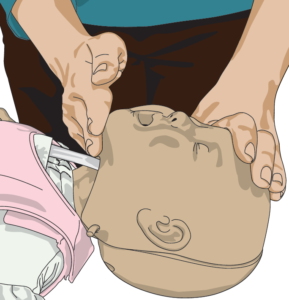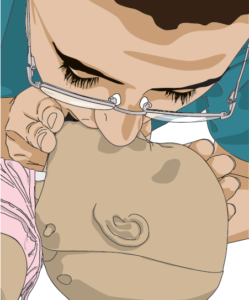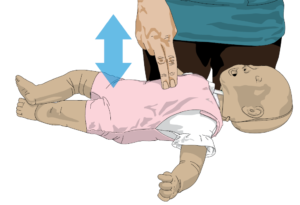If your baby stopped breathing, would you know what to do? It’s a situation that all parents hope they’ll never face, but it pays to be prepared. With a baby on the way, at the end of February former wrestler and actor Dwayne Johnson (The Rock) posted on Instagram about how he and his family took a course on preventing choking and performing CPR on infants and children, drawing attention to something which may not cross the minds of many expectant parents. Is it time for you to learn baby CPR too?
According to research by St John Ambulance, only one in four parents know what to do if their baby stops breathing, despite it being their biggest fear. Studies suggest almost 60% of parents have no first aid knowledge at all, despite around 76,000 children under 14 having to be admitted to hospital for accidents in the home each year, over 40% of which are younger than five years old. We highly recommend that parents, particularly those with young children, learn some vital first aid skills. Safety First Aid Training have one day and two day paediatric first aid courses which are ideal for parents, teachers, child minders and anyone else who works with children.
A quick guide to CPR on babies
Performing CPR on adults, children and babies requires different techniques. The following steps apply to babies under a year old.
First, you need to confirm that the baby is in cardiac arrest (unresponsive and not breathing)
- Gently tap the shoulders and shout to try and wake the baby

- If this does not work, lay the baby on a firm surface and open their airway. Do this by placing your hand on the forehead and gently tilting the head into a neutral position. Be careful not to over-extend the neck. Using your fingertips, lift the chin to open the airway
- Look, listen and feel for normal breathing for no more than ten seconds. If the baby is not breathing, or is breathing abnormally (for example, breathing weakly, or taking infrequent, slow gaps), call an ambulance and begin CPR. Sometimes the baby may have a seizure-like episode when their heart stops
- If you are certain the baby is breathing normally, place it in the recovery position. If you are in any doubt, call an ambulance and start CPR
Here’s what you should do if you have confirmed the baby is unresponsive and not breathing normally, or are in doubt about their breathing:
- Ask someone nearby to call 999. If you have to make the call yourself, take the baby to the phone if necessary and use the speaker function
- If you have to leave the baby to call 999, give CPR for one minute first
Commencing CPR

First, give rescue breaths.
- Keeping the airway open, seal your mouth around the baby’s mouth and nose
- Give five initial rescue breaths – blowing in just enough air to make the chest visibly rise. Be careful not to over-inflate the lungs
Then, combine rescue breaths with chest compressions
- Use 2 fingers to depress the chest at least a third of its depth (around 4cm)

- Give 30 chest compressions at a rate of 100-120 per minute
- Open the airway again by tilting the head and lifting the chin, then give two more rescue breaths
- Continue with uninterrupted chest compressions and rescue breaths at a ratio of 30:2 until a medical professional tells you to stop, or the baby is definitely waking up, moving, opening their eyes and breathing normally
If your rescue breaths are not making the chest rise, check in the mouth and remove any visible obstruction, then make sure there is enough head tilt and chin lift. Do not interrupt compressions by more than 10 seconds to attempt 2 breaths.
The best way to ensure you’re able to perform lifesaving CPR on a baby is to take a first aid course. Contact us if you would like more information about Safety First Aid’s first aid courses for children and infants. If you haven’t got a first aid kit in your home yet, you can buy one here.
